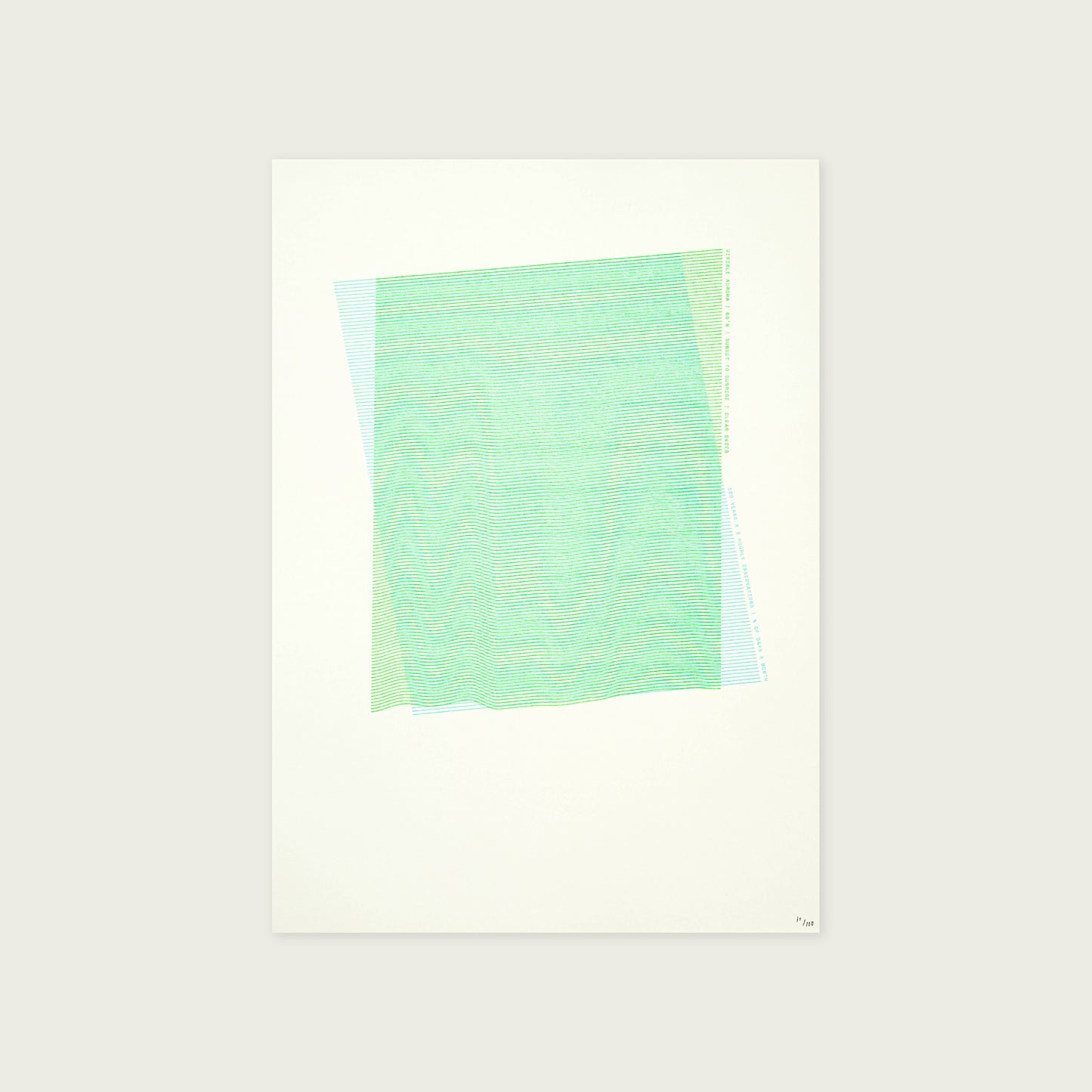Moire Northern Lights Risograph Print
Moire Northern Lights Risograph Print
Couldn't load pickup availability
Uncovering the best months to see the northern lights.
The patterns that swirl around the northern lights are fascinating. But so are the patterns that can be found in the data.
My work revolves around data. But data is essentially somebody's observation. In the very earliest reports on the northern lights from the Shetland Isles, somebody put a small crown symbol next to an entry if you could actually see the lights i.e. if there was no cloud.
I love these human stories. So I brought my own human story to hundreds of spreadsheets on daylight hours, cloud cover and three-hourly readings of northern light data to work out if I could add my own crown next to an entry.
All to find out what the best month is to actually see the northern lights.
Specification
297mm W x 420mm H (A3)
Limited Edition (100) Risograph
2 Colour: Fluorescent Green and Mint
175gsm Natural Coloplan Paper
Details
Using more than 100 years of data, I gathered 3-hourly information on northern lights data from the Shetland Isles and looked at the most likely months that had strong activity. Basically looking at activity that could be seen in Southern Scotland and into England and Wales.
Once I had the peak number of days by month, I then looked at all these entries and cross referenced them with cloud coverage data and daylight hours to ensure each reading fell after sunset and before sunrise. Interestingly, even cloud coverage has its own scale. And so I only included instances where the skies were clear or had a small scattering of cloud.
The maths doesn't quite stop there. I then wanted to display this data within a moire pattern. And so when you look through the lines, you'lll see a data based light show tracking the number of days by month across the year where January is on the far left and December on the far right.
And the answer? The peak near the beginning shows that April is the best month to spot the lights, with a combination of having good activity, the days becoming longer and the skies at their clearest.
Data Source
British Geomagnetic Society










